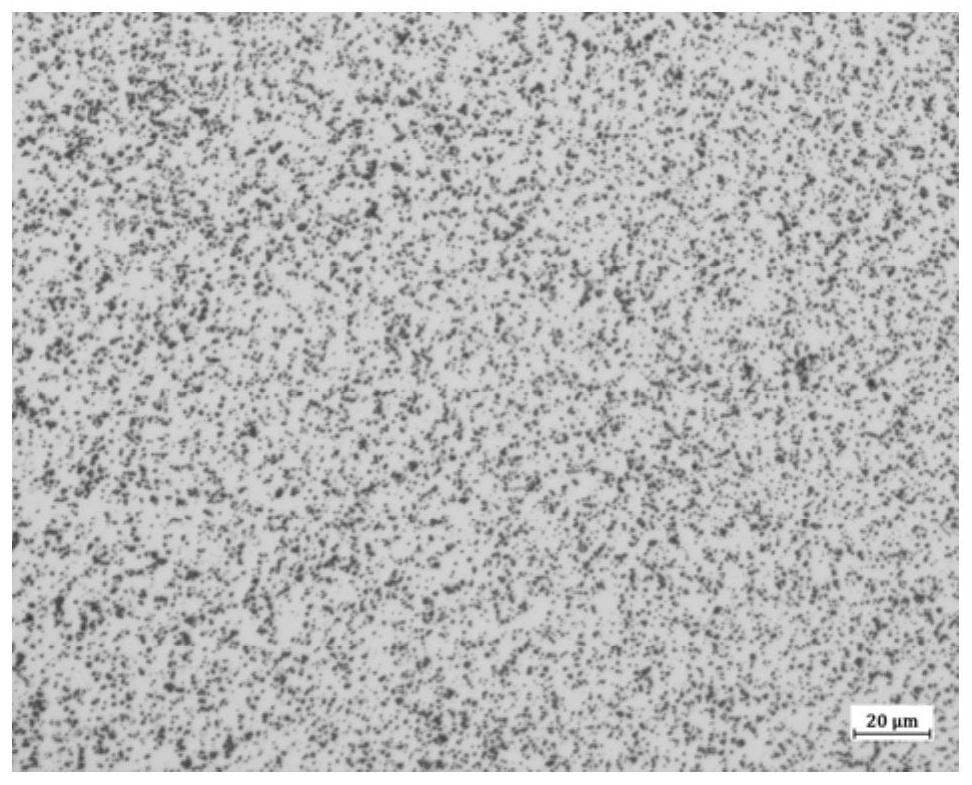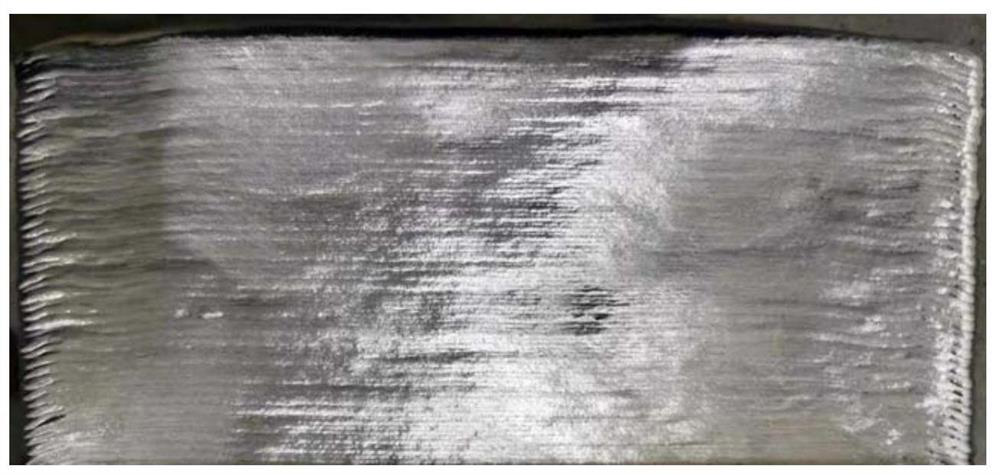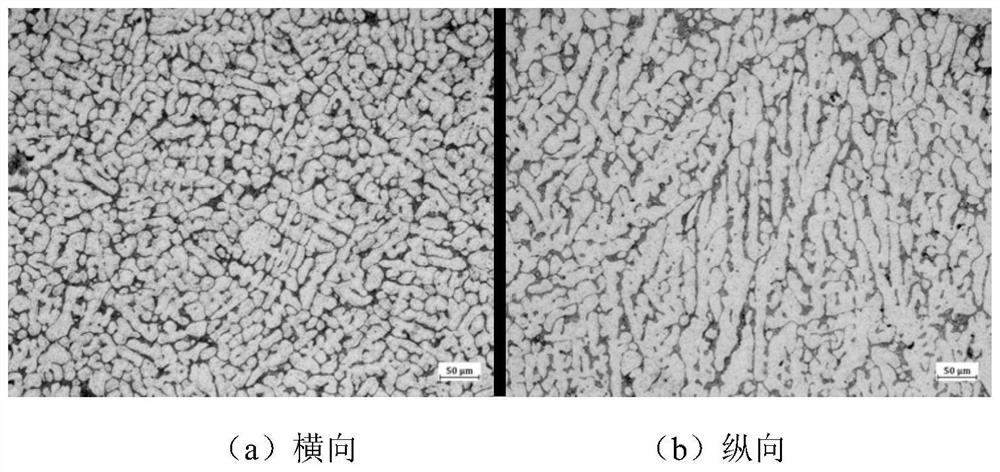An aluminum-silicon alloy welding wire suitable for wire additive manufacturing
An aluminum-silicon alloy and additive manufacturing technology, used in manufacturing tools, welding equipment, welding media, etc., can solve the problems of not being able to give full play to the characteristics of the alloy manufacturing process, and achieve excellent appearance quality, good forming, and improved high temperature stability. Effect
- Summary
- Abstract
- Description
- Claims
- Application Information
AI Technical Summary
Problems solved by technology
Method used
Image
Examples
Embodiment 1
[0049] The invention provides an aluminum-silicon alloy welding wire suitable for wire material additive manufacturing, the preparation steps of which are as follows:
[0050] (1) Raw material configuration: Al: 118kg, Si: 9.10kg, Mg: 0.78kg, AlTi10: 1.56, AlLa30: 0.13kg, AlSr10: 0.39kg are melted and alloyed in an intermediate frequency furnace, and the melting temperature is controlled at 750± 10°C, the feeding sequence is: Al—Si—AlLa30—AlSr10—AlTi10—Mg, and the gap between each two alloy materials should not be less than 3 minutes;
[0051] (2) After smelting, the aluminum alloy melt is subjected to inert gas rotary injection refining and secondary vacuum refining. During the refining process, the temperature of the aluminum melt is controlled at 750°C±10°C, and the inert gas is 99.999% Ar.
[0052] (3) The refined aluminum alloy melt is kept at 720°C±10°C in an inert gas-protected resistance furnace and continuously cast into a disc with a diameter of 12mm±1mm, and the cas...
Embodiment 2
[0059] Using the welding wire prepared in Example 1 as the raw material, the stacking was carried out by CMT additive process at room temperature. The accumulation process is well formed, and the appearance of the accumulation body is as follows figure 2 shown. The directly formed accumulation structure has smaller primary dendrite spacing (DAS) and secondary dendrite arm spacing (SDAS), and the second phase particles such as eutectic silicon are distributed among the dendrite arms, such as image 3 shown. After T6 heat treatment, the eutectic silicon is fully spheroidized, the second phase particles are evenly distributed in the matrix, and the dendrites are all eliminated, as shown in Figure 4 shown.
[0060] The mechanical properties of the accumulated body after T6 heat treatment were tested at room temperature and 200°C / 30min, and the results are shown in Table 1.
[0061] Table 1 The mechanical properties of the accumulation body of the present invention and compar...
Embodiment 3
[0065] The invention is an aluminum-silicon alloy welding wire suitable for wire material additive manufacturing. The alloy composition is calculated by mass percentage: silicon Si: 6.98, magnesium Mg: 0.61, titanium Ti: 0.12%, strontium Sr: 0.030%, lanthanum La: 0.028 %, iron Fe: 0.08, and the balance is aluminum Al.
[0066] Prepared according to the processing method described in the invention The processing process is smooth, and the finished product rate reaches 92%. The welding wire is used as filler for welding, and the weld seam grade reaches Class I, and the welding strength coefficient is more than 95%.
PUM
| Property | Measurement | Unit |
|---|---|---|
| tensile strength | aaaaa | aaaaa |
| yield strength | aaaaa | aaaaa |
| tensile strength | aaaaa | aaaaa |
Abstract
Description
Claims
Application Information
 Login to View More
Login to View More - R&D
- Intellectual Property
- Life Sciences
- Materials
- Tech Scout
- Unparalleled Data Quality
- Higher Quality Content
- 60% Fewer Hallucinations
Browse by: Latest US Patents, China's latest patents, Technical Efficacy Thesaurus, Application Domain, Technology Topic, Popular Technical Reports.
© 2025 PatSnap. All rights reserved.Legal|Privacy policy|Modern Slavery Act Transparency Statement|Sitemap|About US| Contact US: help@patsnap.com



